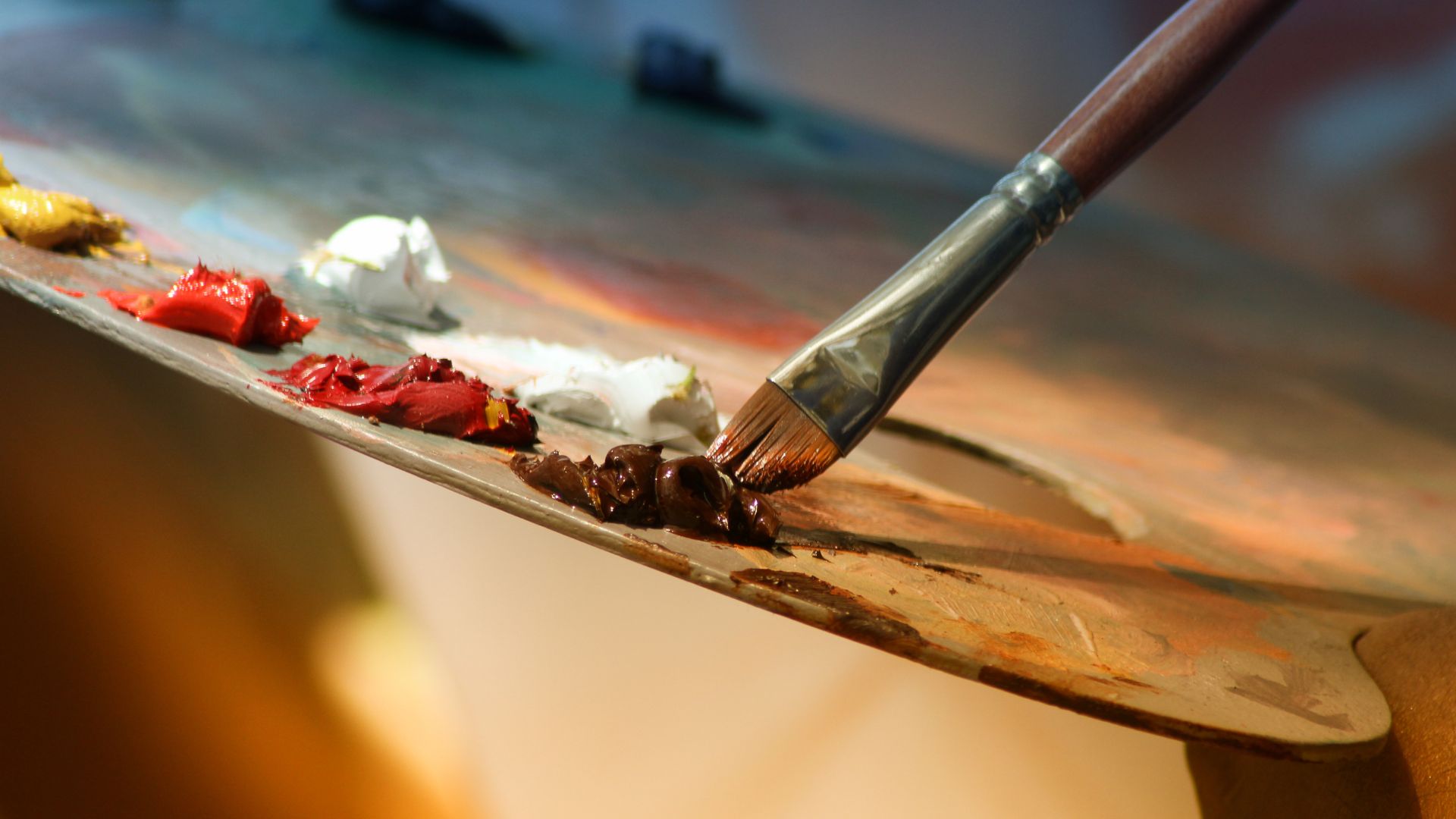Painting on canvas with wall paint can yield fantastic results, but it requires a few techniques to ensure a smooth and vibrant outcome. Let’s dive into the process step by step:
When selecting wall paint for canvas, opt for acrylic-based paints. They work excellently on canvas due to their flexibility, durability, and fast drying time. Plus, they offer a wide range of colors and finishes to suit your artistic vision.
Preparing the Canvas
- Surface Preparation: Ensure the canvas surface is clean and free of dust. Use a slightly damp cloth to gently wipe the canvas and let it dry completely.
- Priming: Apply a primer or gesso to the canvas before painting. This helps the paint adhere better and prevents it from seeping into the fabric.
Techniques for Painting
- Layering: Start with lighter colors as your base layer and gradually add darker colors on top. This technique allows for better blending and avoids overpowering lighter shades.
- Blending: Use a dry brush technique or a damp sponge to blend colors seamlessly. This creates smooth transitions and gradients between hues.
- Experimenting with Textures: Wall paints can be thickened or thinned by adding water or a medium. Experiment with different consistencies to create textures and varying effects on the canvas.
- Building Depth: Create depth in your painting by layering colors and adding shadows and highlights. This technique gives your artwork a more three-dimensional look.

Black and Gray Paint Brush
Tips to Enhance Your Painting Experience
- Mixing Colors: Invest time in understanding color mixing. Experiment to create new shades and tones that complement your artwork.
- Cleaning Brushes: Rinse brushes thoroughly between color changes to prevent muddying your colors. Clean them well after each session to maintain their quality.
- Practice and Patience: Painting with wall paint on canvas might require practice to get the hang of the medium. Be patient and give yourself room for experimentation and improvement.
So,….
Painting on canvas with wall paint opens up a world of creative possibilities. The key is to select the right paint, prepare your canvas properly, and experiment with various techniques to bring your artistic vision to life.
Remember, there are no strict rules in art allow yourself to explore and enjoy the process.
Let’s explore some additional insights into painting with wall paint on canvas.
Troubleshooting Common Issues
- Cracking or Peeling: To prevent cracking, avoid applying thick layers of paint all at once. Build up the layers gradually, allowing each to dry completely before adding the next.
- Color Opacity: Some wall paints might have lower opacity, requiring multiple layers to achieve the desired richness of color. Test the opacity by applying a small patch before painting the entire canvas.
Maintaining Your Artwork
- Drying and Curing: Even though acrylic-based wall paint dries quickly, allowing your artwork to cure for a few days or weeks ensures its longevity. Keep it in a well-ventilated area away from direct sunlight.
- Protective Coating: Consider applying a varnish once your painting has completely dried and cured. Varnishing protects the colors from fading and adds a professional finish to your artwork.
External Resources for Further Exploration
Here are three valuable resources to expand your knowledge on painting techniques and wall paint:
- The Spruce Crafts: Acrylic Painting Techniques – Offers comprehensive guidance on various acrylic painting techniques.
- Blick Art Materials: Choosing the Right Canvas for Your Painting – Helps in selecting the ideal canvas for different types of paintings.
- Golden Paints: Understanding Acrylic Mediums – Explores different acrylic mediums to enhance textures and effects in your paintings.
Final Thoughts
Painting with wall paint on canvas can be an exciting and rewarding experience. It’s all about experimenting, honing your skills, and letting your creativity flow.
Comparison tabular
| Aspect | Wall Paint on Canvas | Artist-Grade Acrylic Paint on Canvas |
|---|---|---|
| Quality | Typically less pigmented, may require more layers | Higher pigmentation, vibrant colors |
| Consistency | Varies in consistency, might need thinning or thickening | Consistent texture, easier to work with |
| Durability | May be less durable over time, especially without primer | Highly durable, retains color and quality longer |
| Opacity | Can be less opaque, might require multiple coats | More opaque, covers surfaces efficiently |
| Color Range | Limited color range compared to artist-grade paints | Wide range of colors and specialized shades available |
| Blendability | Might be less suitable for intricate blending techniques | Excellent blendability, ideal for detailed work |
| Cost | Economical, generally cheaper | Higher cost, reflects the quality and pigmentation |
| Artistic Result | Might require more effort to achieve desired effects | Easier to achieve desired effects with less effort |
This comparison highlights the key differences between using wall paint and artist-grade acrylic paint on canvas. While wall paint can be a budget-friendly option, artist-grade acrylics offer better quality, consistency, and durability for professional and detailed artwork.
Wrapping up
In the realm of canvas painting, whether using wall paint or artist-grade acrylics, the choice ultimately hinges on your artistic goals, budget, and desired outcome.
Wall paint on canvas can be a fantastic avenue for exploration, especially for those starting or experimenting with painting. It’s cost-effective and allows room for creativity, though it might demand more effort to achieve specific effects due to its varying consistency and opacity.
On the other hand, artist-grade acrylic paints are tailored for artistic endeavors, offering higher pigmentation, consistent quality, and a wide array of colors. While they might come at a higher cost, they provide ease of use and a professional finish, making them ideal for detailed and vibrant artworks.
Whichever path you choose, remember that art knows no bounds. Embrace experimentation, hone your skills, and let your creativity flow freely. Whether it’s wall paint or artist-grade acrylics, each has its unique charm and potential for creating captivating masterpieces on canvas.

For over a decade, I’ve been Mike, an artist, crafter, and designer deeply immersed in the Croc world. I thrive on crafting unique, size-inclusive patterns, fostering creativity, and sharing them on ktforum.com. My designs aim to ignite your creative spark and delight you, ensuring clarity and ease of use through rigorous testing. Join me in expressing your creative flair and showcasing your craft with joy.
Related Posts
- Should You Sand a Canvas Before Painting it with Wall Paint
When it comes to using wall paint on canvas, the question of sanding often arises.…
- Can You Paint Over Existing Wall Paint on Canvas
If you're an aspiring artist or someone enthusiastic about trying their hand at painting, you…
- Testing Wall Paint on Canvas: A Smart Approach to Your Painting Project
When it comes to transforming a canvas into a masterpiece, choosing the right paint is…
- Ensuring Longevity: Wall Paint on Canvas
When it comes to painting, the canvas serves as an artist's playground, a surface that…

